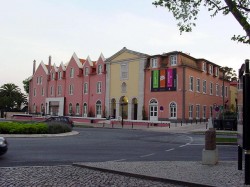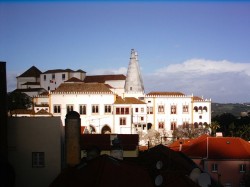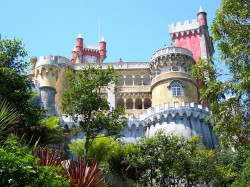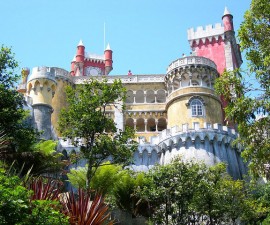 Cascais is a town brimming with history – a long-favoured summer escape destination for the former Portuguese royal family, a favourite amongst European nobility and one of a series of important protective outposts on Portugal’s western flank.
Cascais is a town brimming with history – a long-favoured summer escape destination for the former Portuguese royal family, a favourite amongst European nobility and one of a series of important protective outposts on Portugal’s western flank.
Keep luxury in your sights
Palaces and Palisades is a tour that takes in the most important walled and regal structures of Cascais and its famous hilltop neighbour, Sintra. The five-star Grande Real Villa Italia Hotel makes the perfect place to begin your tour – and indeed to stay if your budget permits. This is the former residence of Italy’s King Umberto II who lived here while in exile from his country in Portugal following the Second World War and into the 1980s.
It is situated right on the waterfront close to the centre of town in an elevated position and offers panoramic views from just about every room. The Grande Real Villa Italia is typical of the grand houses that are dotted around Cascais and the surrounding area, all of which are a delight to admire from afar as you relax on the beach or to examine close to in all their faded finery.

Head to downtown Cascais and down the steep steps close to the train station to the Praia da Rainha for an even better view of these grand structures. Named for its popularity with royalty in times gone by, the Praia da Rainha, or Queen’s Beach, was formerly a private beach for the great and the good visiting their summer mansions on the Cascais coast. To this day many remain intact, watching silently over the beach below.
After a bite of lunch your itinerary takes you inland through the Sintra-Cascais Natural Park, a protected area of 145km2, which boasts many fascinating landscapes where nature and nurture meet in an explosion of colour and shape.
Regal splendour in spectacular Sintra
Sintra is known as the city of palaces and is renowned all over the world for its exotic architecture and long historical connections. Start your explorations of this lovely town at the Pena Palace. Dating back to the 1840s it was formerly a monastery and summer home of the Portuguese kings and queens. The detailed décor, exquisite architecture and lovely warm carved wood furnishings provide a unique window onto the world of the country’s former royalty.
The Pena Palace is part of a designated UNESCO World Heritage Site and its very architecture is an ambitious, enthusiastic yet successful combination of Moorish, Gothic, Manueline and Indian-inspired styles brought together coherently in a splash of pastel colouring. Take the time to wander through the tranquil landscaped gardens to really appreciate the setting.Located right in the heart of Sintra is the Quinta da Regaleira and this is your next stop. This is a huge estate building in the early 20th century to an Italian design by the renowned architect, Luigi Manini. Another World Heritage Site, this too combines an eclectic mix of architectural styles, combining Gothic, Manueline and Neoclassical styles to great effect. There is much to see in the five stories of the Quinta da Regaleira estate including its manicured gardens and a series of underground caves and grottos that were only recently discovered.
From here, make your way to the Palácio Real de Queluz, one of the best-preserved examples of Rococo architecture in the whole of Europe. The Palacio Real de Queluz was formerly the summer retreat of King D. Pedro II and Queen Maria I and is a study in opulence and extravagance as well as a reminder of Portugal’s historic past.
Don’t return to Cascais without making a stop at the Palácio Nacional de Mafra, the palace-monastery that was built in the eighteenth century during the reign of King D. João V. Located at Mafra, just a short ride from Sintra, the Palacio Nacional de Mafra is one of the most impressive examples of Baroque architecture to be found anywhere on the European mainland. The full estate comprises a palace, a convent and a church and boasts a jaw-dropping 1200 rooms, several thousand doors and windows and a library housing over 40,000 rare books and papers.


